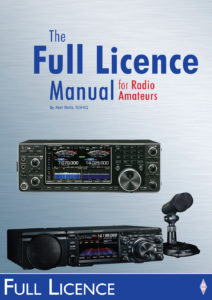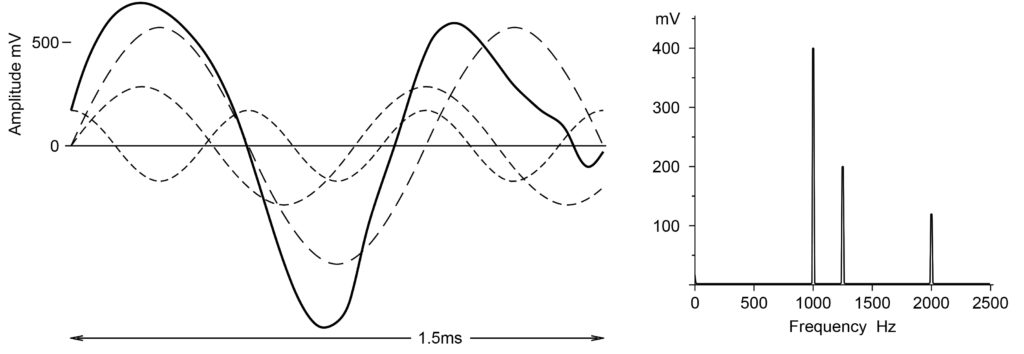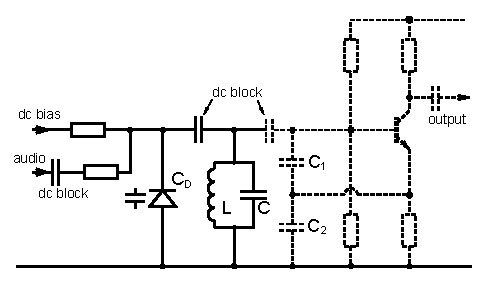Full Licence Manual for Radio Amateurs
 2nd Edition
2nd Edition
by Alan Betts, G0HIQ
This book is the third course-book in the RSGB series for those interested in obtaining an amateur radio licence. In line with the progressive three-tier UK licence structure The Full Licence Manual completes the natural progression from Intermediate and Foundation Licence Now!
Fully revised to reflect the changes introduced in Syllabus 2019 the Full Licence Manual contains all of the information required to move to the final stage of amateur radio licensing. Written to match the Full licence syllabus the book is broken down into logical sections. Licence conditions are covered in detail as are operating techniques and amateur radio safety. As you would expect, there are sections covering technical matters such as circuits, semi-conductors and more. The Transmitter and Receiver are covered in detail along with the material required for understanding the Software Defined Radio section of the syllabus. Feeders, Antennas and Propagation all get chapters of their own, as do Electromagnetic Compatibility and Measurements, All this means that the Full Licence Manual is the ideal companion to a formal training course. The book is also a useful reference source and many amateurs will find themselves referring to it long after they have passed their examination.
The Full Licence Manual is for everyone progressing to the Full licence from The Intermediate Licence and is the best route to success in the examination.
Click cover picture to buy this online.
Corrections and updates
We are shipping the 2nd edition of this book and the significant corrections and updates to this are provided below. You may note that changes are made to the printed edition when it is reprinted and there can be various printings in circulation, so it is worth checking your copy against the updates below. We are currently shipping an edition marked:
First Published 2018
Second Edition 2020
Reprinted with amendments 2021, 2022 & 2023
This edition has been updated to include all prior corrections and does contain a small number of expanded and revised explanations not included in earlier printings.
As of the 1 September 2022 the Exam syllabus used by the examinations will be version 1.5. The changes made to the syllabus primarily concern the introduction of the requirement for all amateurs to check compliance with EMF (Electromagnetic Field) exposure limits. The current edition of the Full Licence Manual is compliant with syllabus 1.5. For those using previous editions of the book we have provided a supporting leaflet that details these important changes, this can be obtained as a free of charge download from here.
Amendments made to previous editions of this book.
Please note that the worked examples promised on page ii are not yet available but they will be published here when they are.
Page 4, How to use this book
Col 2, lines 3 to 5. Replace Foundation Licence now! And Intermediate Licence, Building on the Foundation’ with ‘The Foundation Licence manual and The Intermediate Licence manual’
Page 7, Operation at Sea
Col 2, para 5, Replace the last sentence of the paragraph with ‘If you are still in UK waters you must use the appropriate RSL. Once in international waters, outside the territorial limit, then you must drop the RSL and identify using your ‘core’ callsign.’
Page 8, UK User Services
Col 2, para 2, Replace the first sentence ‘Radio Amateur Emergency Network…’ with ‘RAYNET-UK, via its member groups, provide training in such activities and can give advice.’
Page 13, Earthing
Col 1 last 3 lines over to 2 lines on col2. Replace last sentence of paragraph with ‘A RCBO (Residual Current Circuit Breaker with Overcurrent protection) should be used in order to protect against such faults. A RCBO will disconnect the supply with faults to earth at the milli-amp level as well as significant overloads.’
Page 14, Taking safety with you
Col2, last para lines 4 and 7 add ‘or RCBO’ after ‘(RCD)’ in each case.
Page 16, Protective Multiple Earthing
This advice has been significantly updated by the RSGB and therefore the page should be amended as follow:
Col 2, after the third para insert this text:
If all the services entering the house, such as gas and water, are in plastic pipes then it is quite possible the metal pipework inside the house, taps, pipes, radiators etc are not electrically connected to Earth, they are effectively floating and the regulations do not now require them to be bonded to the MET. It is acceptable to leave them floating since they are not, under those circumstances, importing a true earth into the house giving rise to a potential difference and a path for dangerous currents. However if that metalwork does have a route to Earth then bonding to the MET is required in order to maintain the equipotential zone. This is a decision to be made by a qualified electrician.
Col3, Delete all text from paragraph four to the end of the page and insert this text:
If your RF earth connection does fail, the house earth (and neutral) will rise, possibly to the full 230V. In the house that is not a problem as all metalwork is at the same potential or floating and to get an electric shock you need a potential difference. In the shack the situation is dangerously different. The cases of domestic items plugged into the mains will be at a high potential. So will exposed pipework and radiators unless the external services are in plastic and the house pipework is not bonded. (I.e. it is now floating.) However the transceiver and associated items will be at true earth potential since they are connected to the RF earth. There is a distinct possibility of a fatal electric shock.
The station RF earth must be bonded to the MET to ensure an equipotential environment in the shack. As just explained that means the bonding cable and the RF earth cable from the point of connection to the actual bonding cable down to earth may be carrying a substantial ‘return’ current of all connected appliances. It may be that this cable needs to be as substantial as the actual supply cable to the house. This bonding must be formally inspected carried out by a qualified electrician and is a ‘notifiable’ change under part P of the building regulations. It is an offence to do it yourself and not get it inspected.
The RSGB EMC Committee has produced two leaflets for further reading on this complex subject. See Earthing and the Radio Amateur (Basic and Advanced leaflets) http://rsgb.org/main/technical/emc/emcpublications-and-leaflets/. You are strongly advised to read these leaflets and may also wish to read leaflet number 12 on Part P and the Radio Amateur. Part P is a reference to the building regulations and electrical safety.
Page 16-17, Extracts from Earthing for the Radio Amatuer
Strike through and disregard these pages. The current leaflet (in full) can be found by clicking here
Page 40, Fourier transforms
Replace Fig 6.5 with the figure below.

Page 46, Frequency modulation
Replace Fig 7.12 with the figure below.

Page 76, Loading coils and antenna efficiency
Col 1 para 2 line 4. change the reference to Fig 11.5 to Fig 11.9
Col 2 para 2, lines 2 and 6, replace the square box with the lambda symbol.
Col 3 AMU para 1, line 7 replace the square box with the omega symbol.
No other corrections have been reported at this time
Category: Books Extra










